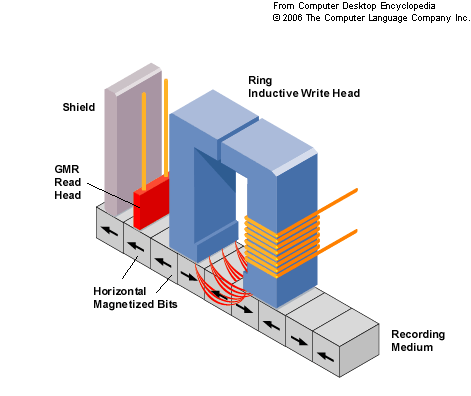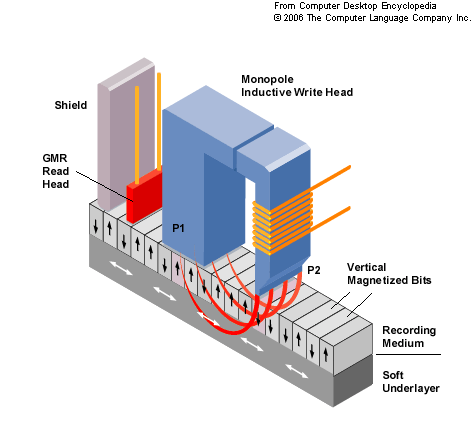"You could say I have a 'magnetic' personality"
One of the most widespread storage mediums for computers today is the hard drive (or hard disk drive). Since all computer information can be translated into binary, simply a sequence of ones and zeros, storing this information really only needs a medium that has at least two states. Magnetic mediums for this are one of the cheapest available, and since a magnet's North and South poles parallel the two states of a binary bit, 1 or 0, magnetic mediums are a logical choice. By altering the magnetic direction of the material,, we can make the magnet either represent a 0 bit or a 1 bit. Likewise, we can use a sensor to detect which pole is nearer to the read device, and translate that back into a 0 or 1 bit. Until recently, these magnetic regions were laid out flat (horizontally) on a disk platter.
However, in recent years (2005) hard drive designers/manufacturers made a break through and figured out how to orient these magnetic regions perpendicular to the disk platter. This increase the information density on the hard drives, allowing for the Terabyte (1000000000000 bytes or 1000 gigabytes) sized drives we have now.

Image H: A diagram of a hard drive with horizontal magnetic regions.

Image I: A diagram of a hard drive with perpendicular magnetic regions.
